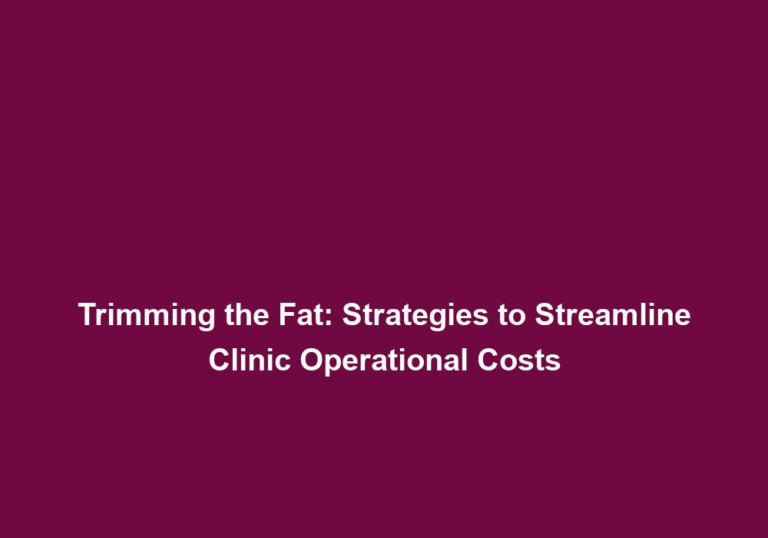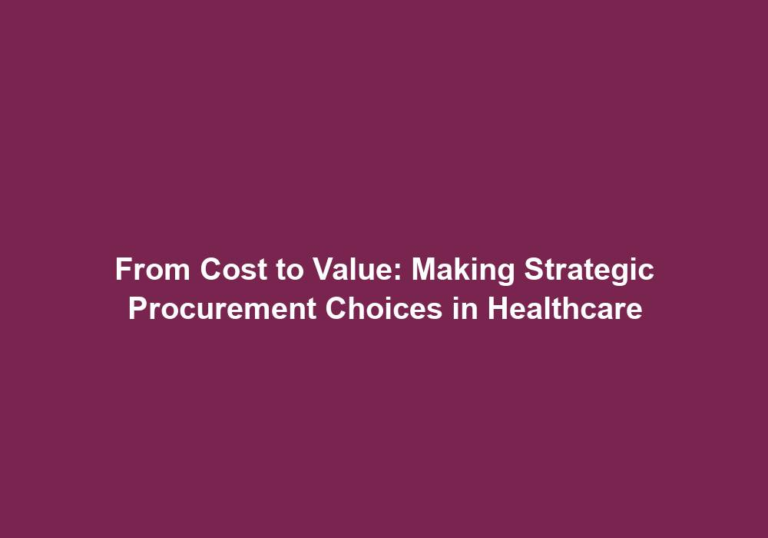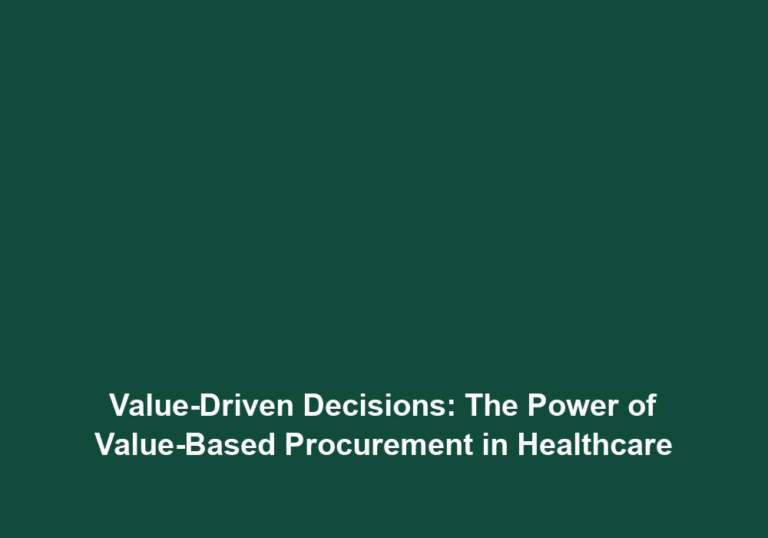Operational Optimizations: Streamlining Costs for Greater Healthcare Profits
The healthcare industry is complex and ever-evolving, with various challenges that can impact the profitability of healthcare organizations. One significant aspect that directly affects the financial success of healthcare providers is the cost of operations. In order to maximize profits, it is crucial for healthcare organizations to focus on operational optimizations and streamline costs. This article will delve into the strategies and approaches that can be implemented to achieve greater profitability in the healthcare sector.
The Importance of Operational Optimizations
Operational optimizations involve the systematic review and improvement of processes, workflows, and systems within a healthcare organization. By identifying inefficiencies, redundancies, and areas of improvement, healthcare providers can reduce costs, enhance productivity, and ultimately improve their bottom line. Here are some key reasons why operational optimizations are crucial for healthcare organizations:
-
Cost Reduction: By streamlining operations, healthcare organizations can identify and eliminate unnecessary expenses, leading to cost reductions and increased profitability. This can be achieved by analyzing expenses, negotiating contracts with suppliers, and implementing efficient inventory management systems to control costs.
-
Improved Efficiency: Operational optimizations ensure that processes are streamlined, allowing healthcare providers to deliver services more efficiently. This leads to improved patient care and satisfaction. By analyzing workflows and identifying bottlenecks, healthcare organizations can implement changes that enhance efficiency, such as automating tasks and eliminating unnecessary steps.
-
Enhanced Quality: By optimizing operations, healthcare organizations can enhance the quality of their services. This, in turn, can result in increased patient retention and positive word-of-mouth referrals. By focusing on areas of improvement, healthcare providers can implement changes that lead to better patient outcomes, improved safety measures, and higher standards of care.
-
Increased Competitiveness: Organizations that focus on operational optimizations can gain a competitive edge in the healthcare industry. By reducing costs and improving efficiency, healthcare providers can offer more affordable and effective services compared to their competitors. This can attract more patients and increase market share, leading to greater profitability.
Strategies for Operational Optimizations
To achieve operational optimizations and streamline costs, healthcare organizations can implement various strategies. These strategies can be tailored to suit the specific needs and goals of each organization. Below are some effective approaches that can be considered:
1. Process Analysis and Redesign
Analyzing existing processes is the first step towards operational optimizations. Healthcare organizations should conduct a thorough review of their workflows, identifying bottlenecks, redundancies, and areas of improvement. By mapping out the entire patient journey, from registration to discharge, organizations can identify inefficiencies and implement necessary changes. This may involve redesigning processes, automating tasks, or eliminating unnecessary steps. By streamlining processes, healthcare providers can reduce costs, improve efficiency, and enhance patient experience.
2. Technology Integration
Adopting advanced technologies can significantly contribute to operational optimizations. Healthcare providers can leverage electronic health records (EHRs), telemedicine, and other digital solutions to streamline administrative tasks, improve communication, and enhance patient care. These technologies not only reduce costs but also increase efficiency by eliminating manual paperwork and enabling real-time data access. For example, EHR systems can centralize patient information, reduce errors, and improve coordination among healthcare professionals.
3. Supply Chain Management
Efficient supply chain management is vital for healthcare organizations to optimize costs. By carefully analyzing and optimizing the procurement, inventory management, and distribution processes, providers can reduce waste, control expenses, and negotiate favorable contracts with suppliers. Implementing a robust supply chain management system can ensure that essential medical supplies and equipment are readily available, reducing delays and improving patient care. By establishing strong relationships with suppliers and implementing efficient inventory tracking systems, healthcare organizations can minimize costs and improve overall operations.
4. Workforce Optimization
Healthcare organizations should focus on optimizing their workforce to achieve operational efficiencies. This involves ensuring the right staff is assigned to the right tasks, streamlining scheduling processes, and implementing training programs to enhance skills and knowledge. By optimizing workforce allocation, providers can reduce overtime costs, minimize staffing inefficiencies, and improve overall productivity. Staffing models can be adjusted to match patient demand, and training programs can be implemented to enhance staff competencies, leading to improved efficiency and cost savings.
5. Data Analysis and Performance Metrics
Effective data analysis and performance metrics play a crucial role in identifying areas for improvement. Healthcare organizations should establish key performance indicators (KPIs) and regularly monitor them to track progress and identify areas that require attention. By leveraging data analytics, providers can identify trends, measure performance, and make data-driven decisions to enhance operational efficiencies and reduce costs. For example, analyzing patient outcomes, readmission rates, and resource utilization can help identify areas where improvements can be made to optimize costs and enhance quality.
6. Collaboration and Partnerships
Collaboration and partnerships with other healthcare providers, organizations, and stakeholders can lead to significant operational optimizations. By sharing resources, expertise, and best practices, healthcare providers can reduce costs, enhance efficiency, and improve the quality of care. Collaborative initiatives can include joint purchasing agreements, shared services, and partnerships for specialized treatments or research. By working together, healthcare organizations can pool their resources, leverage economies of scale, and achieve greater cost savings.
Conclusion
Operational optimizations are paramount for healthcare organizations looking to achieve greater profitability. By implementing strategies such as process analysis and redesign, technology integration, supply chain management, workforce optimization, data analysis, and collaboration, healthcare providers can streamline costs, improve efficiency, and ultimately increase their profits. By prioritizing operational optimizations, healthcare organizations can contribute to the overall success of the industry while providing high-quality care to their patients.






